Ranked: the world’s most beautiful canals and waterways
Wonderful waterways

Whether it’s a vast international shipping canal or a narrow local waterway, canals have been a prime transportation route for trade and leisure for centuries. From floating lagoon cities to cross-country water channels, our well-travelled team has ranked what we think are the most remarkable and beautiful canals and waterways from across the globe.
Read on to see which wonderful waterway secured our top spot...
32. Kiel Canal, Germany
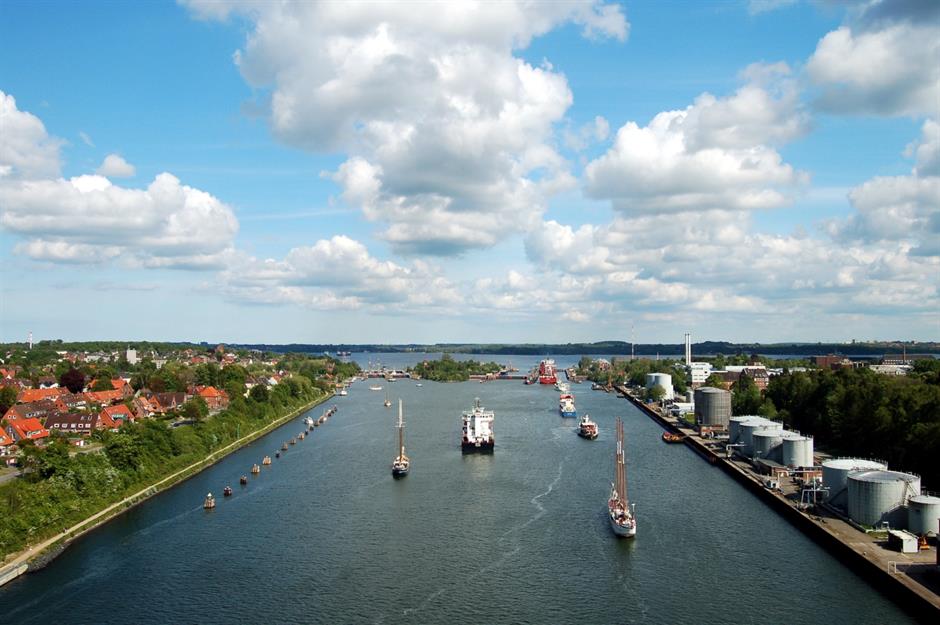
Considered the busiest artificial waterway in the world, Germany’s mighty Kiel Canal trails between Brunsbuttelkoog on the North Sea to Holtenau on the Baltic Sea. Originally named the Kaiser-Wilhelm Canal, the waterway was built in the late 19th century and initially served the German military so ships would avoid having to travel northward around the Dutch peninsula.
Extended in 1914 to meet the demand of naval traffic, the canal was later internationalised under the Treaty of Versailles after World War I. Today, the Kiel Canal continues to be one of the world's most important waterways.
31. Caledonian Canal, Scotland, UK
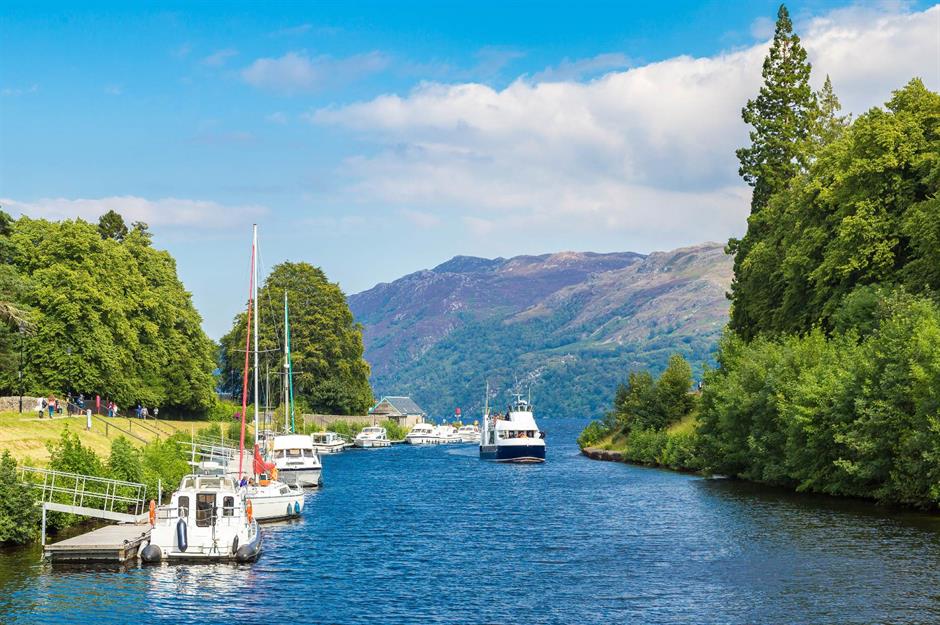
Widely considered one of the most beautiful waterways in Britain, Scotland’s Caledonian canal cuts through the rugged landscape of Great Glen. Opened in 1822, it was an engineering marvel constructed by Thomas Telford, travelling 60 miles (97km) from Fort William in the west to Inverness in the east. An array of breathtaking viewpoints can be found along the canal alongside picturesque lochs that feed into its waters as it trails through the wilderness.
30. Corinth Canal, Corinth, Greece
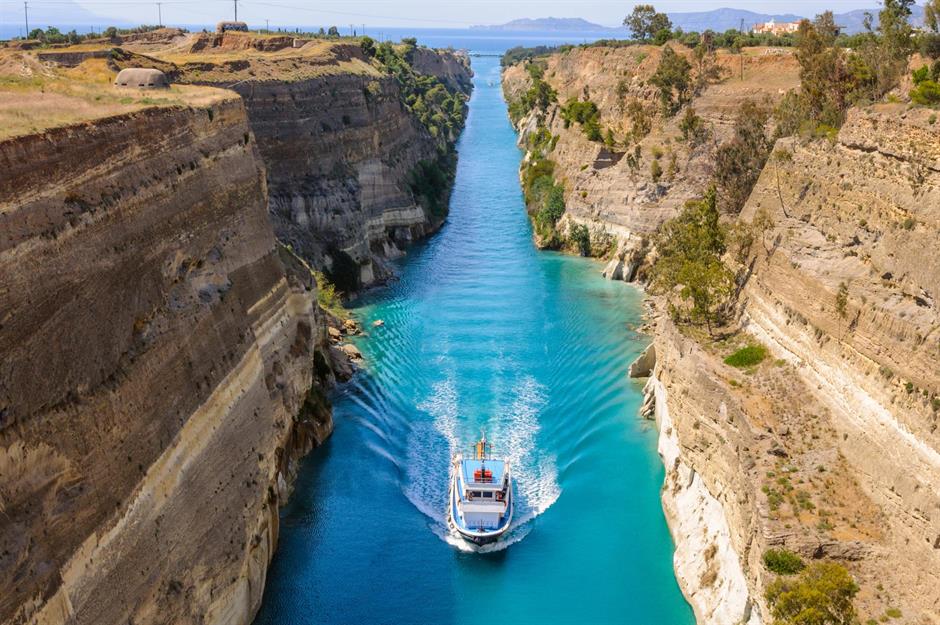
Slicing across the Isthmus of Corinth, this tiny Greek waterway links the Gulf of Corinth in the northwest with the Saronic Gulf in the southeast. Completed in 1893, the canal was built as a shortcut, saving ships around 185 nautical miles (340km) in sailing time. At roughly 3.9 miles (6.3km) with a width reaching up to 82 feet (25m), its steep cliffs and narrow design have made it a popular tourist destination.
29. Dubai Water Canal, Dubai, UAE
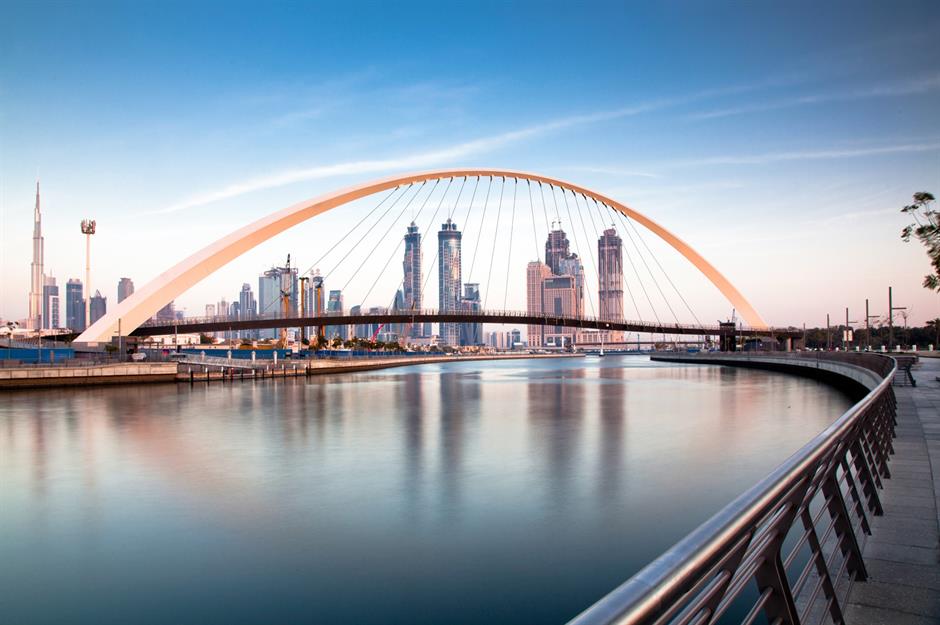
Carving into Dubai’s sprawling metropolis, this modern waterway can be found in the city’s Old Quarter. First opened in 2016, the water canal is roughly two miles long (3.2km) and meanders between the Old Creek and Business Bay. Hailed for its contemporary design, the canal features luxury shops and hotels on either side and is dotted with bridges providing epic views of Dubai’s signature skyline.
Love this? Follow our Facebook page for more travel inspiration
28. Llangollen Canal, England and Wales, UK
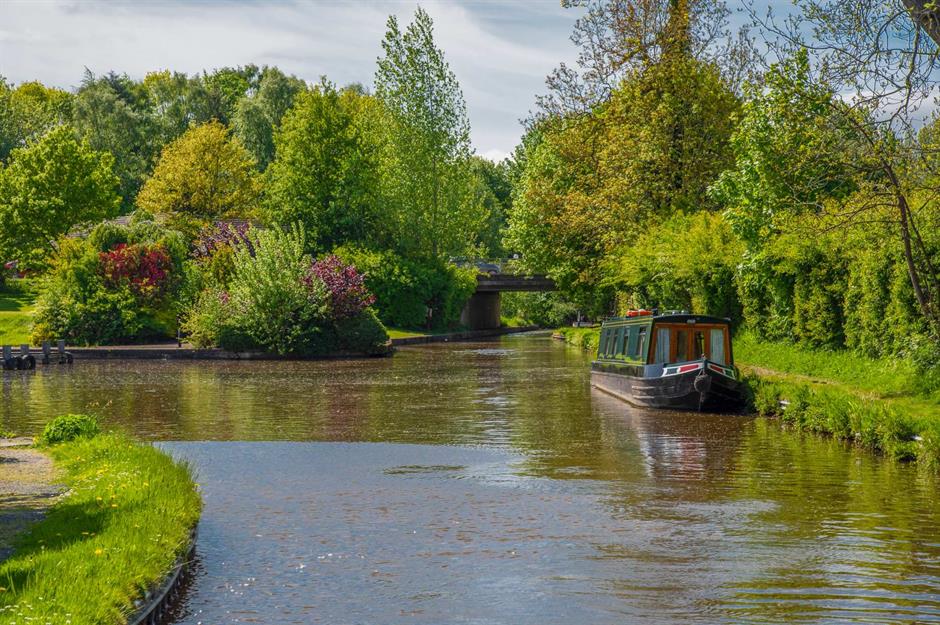
Traversing the border between England and Wales, the breathtaking Llangollen Canal connects the Welsh town of Llangollen with Hurleston in Cheshire. Stretching for 46 miles (74km) across the English and Welsh countryside, the waterway is filled with scenic sights and historic landmarks, including the famous Pontcysyllte Aqueduct. Completed in 1805, the UNESCO-listed aqueduct is one of the most famous crossings in Wales.
27. Rideau Canal, Ontario, Canada
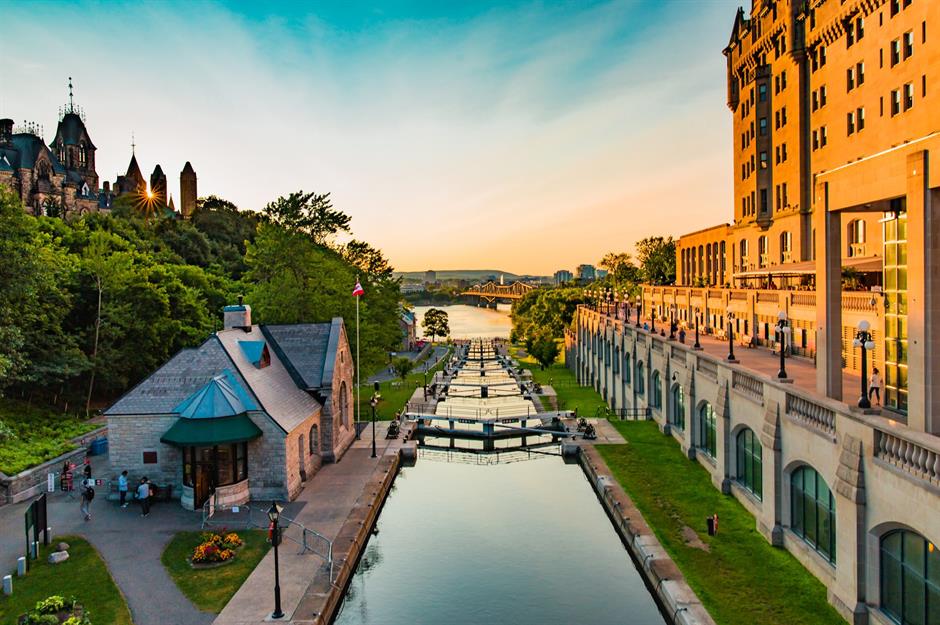
Winding through Canada’s capital Ottawa, the Rideau Canal is the oldest continuously operated canal system in North America. First opened in 1832, it was designed as a secure supply route from Montréal to Kingston following the War of 1812.
Hailed as one of Canada’s greatest engineering feats of the 19th century, the waterway is now a UNESCO-listed landmark. Each winter, the canal in Ottawa’s downtown is transformed into an icy paradise as its waters freeze over. At over 4.8 miles long (7.8km), it becomes the longest natural ice skating rink in the world.
26. Can Tho, Vietnam

Situated in southern Vietnam, Can Tho is the largest city in the Mekong Delta. Nicknamed 'Vietnam’s rice basket' for its fertile soil and thriving agricultural industry, the Delta is a magical maze of rivers, swamps and islands with Can Tho at its centre. Located on the southern bank of the Hau River, Can Tho is best known for its floating markets on the busy Ninh Kieu waterfront – a tourist hotspot packed with colourful flowers and produce.
25. Suez Canal, Egypt

Known as the first canal to directly link the Mediterranean Sea to the Red Sea, Egypt’s iconic waterway dates back to the 19th century. First opened in 1869, the incredible canal took almost 10 years to build, acting as a border between the continents of Africa and Asia. Measuring roughly 120 miles (193km) long, the Suez Canal provides the shortest maritime route between Europe and the lands lying around the Indian Ocean and western Pacific Ocean.
24. Erie Canal, New York, USA

Built between 1817 and 1825, the Erie Canal in New York state was once the longest artificial waterway in North America. Traversing forests, fields, cliffs and swamps, originally for 363 miles (584km) between Albany and Buffalo, it was a triumph of engineering and construction.
Nicknamed 'the Mother of Cities' the canal gave rise to many of the state's major cities including Albany, Rochester and Syracuse. Today, the historic canal forms part of the Erie Canalway National Heritage Corridor, recognising the waterway's cultural and historical significance.
23. Bridgewater Canal, England, UK
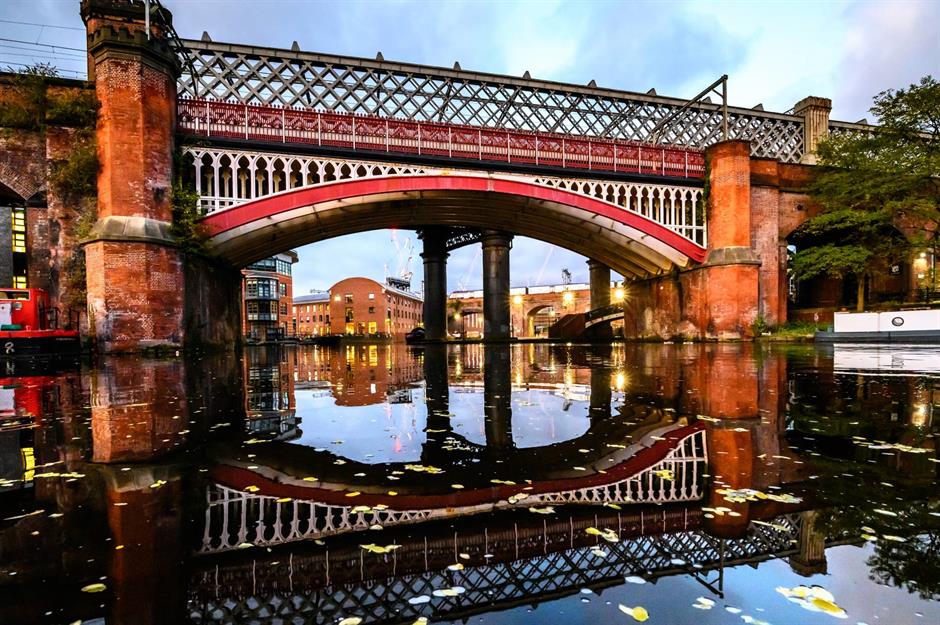
Described as England’s first waterway, the Bridgewater Canal was the first in the country to be built without following an existing watercourse. Originally opened in 1761, the canal marked the beginning of Britain’s famous Golden Age of canals between 1760 and 1830.
Travelling for 39 miles (65km) from Runcorn to Leigh the canal passes an array of well-known landmarks of the northwest. One of the most notable attractions is the Barton Aqueduct, which carries the waterway along to the Manchester Ship Canal. The historic aqueduct is still considered a major feat of civil engineering.
22. Rhine-Main-Danube Canal, Germany
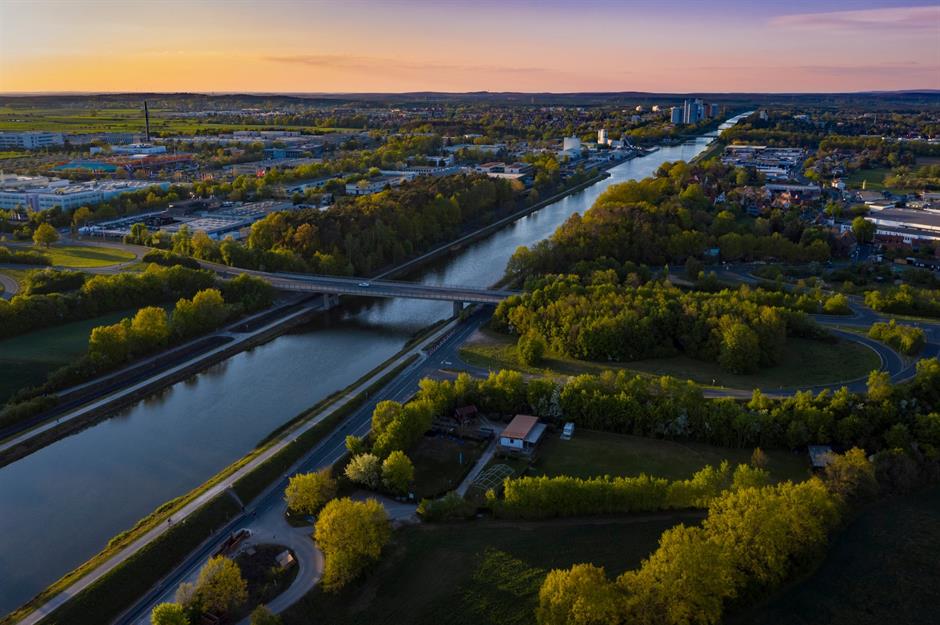
Also known as the Europe Canal, this mighty German waterway connects the Main and Danube rivers in Bavaria. Spanning roughly 106 miles (171km), it is more than twice the length of the Panama Canal, travelling from Bamburg on the Main River to Kelheim on the Danube. Slicing through Bavaria’s rural landscape, the scenic waterway allows traffic to freely flow between the North and Black Seas while passing through some of Germany’s prettiest towns.
21. Nan Madol canals, Pohnpei, Micronesia
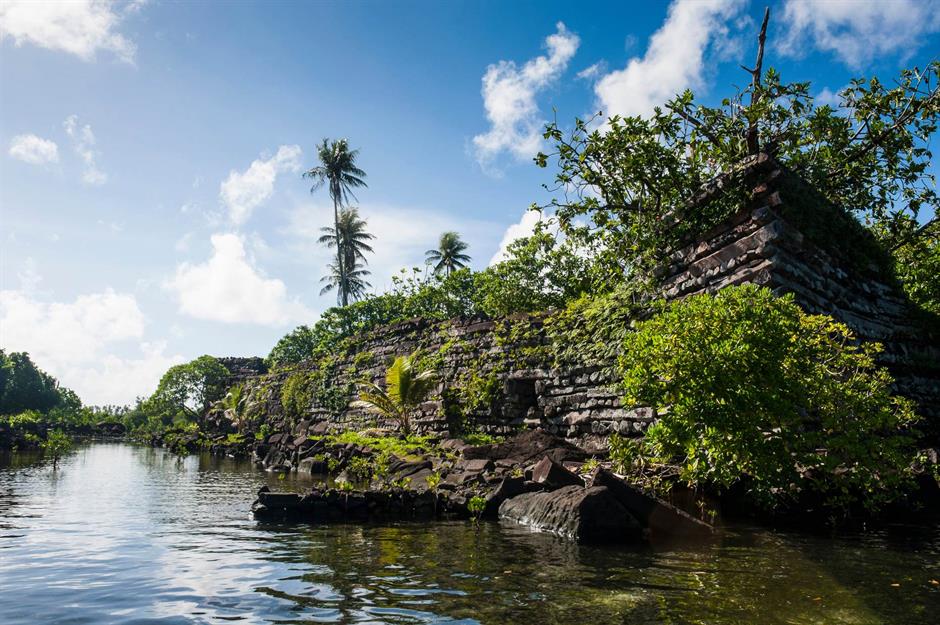
A hidden gem of the Pacific, Nan Madol is a series of over 100 ancient man-made islets off the coast of Pohnpei in Micronesia. Built between AD 1200 and 1500, the ancient city was built on a coral reef, its islands dotted with the ruins of palaces, temples, tombs and houses.
The city was put on the UNESCO Danger list in 2016 due to the uncontrolled plantlife in its waterways that threatens its ruins. With its spectacular architecture and incredible canals, it is one of the most intriguing ancient cities in the world.
20. Aveiro, Portugal
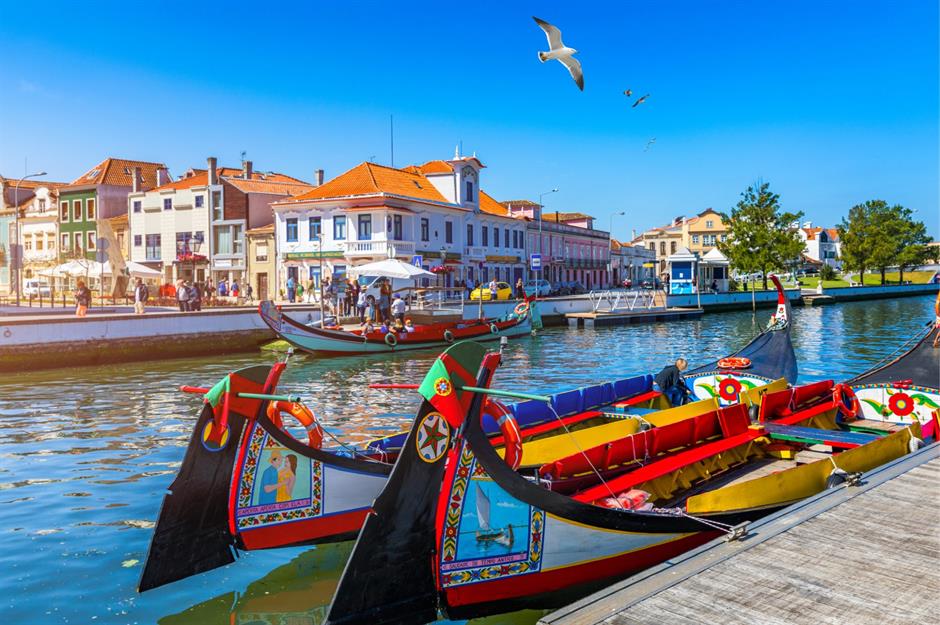
A city shaped by its waters, Aveiro can be found on Portugal’s west coast, and is characterised by its small network of waterways. The canals are mostly used by gondola-style boats known as ‘moliceiros’ that were traditionally used for gathering kelp and seaweed. Surrounded by gorgeous Art Nouveau buildings reflected in the main canal, and dotted with colourful vessels, Aveiro is one of the most romantic destinations in the world.
19. Canal de la Somme, France
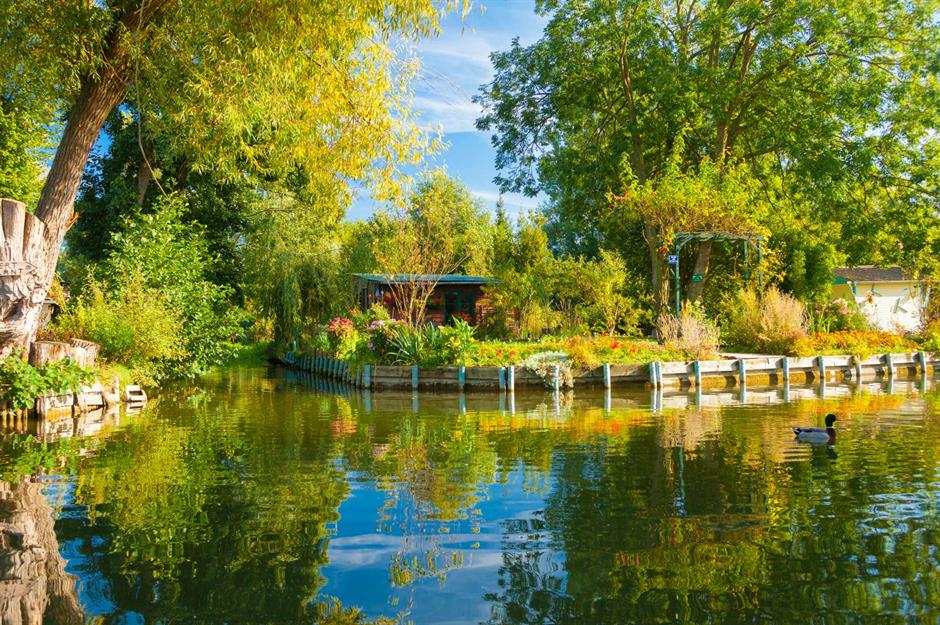
A picturesque stretch of northern France, the Canal de la Somme is one of the country’s most attractive waterways. Thought to have been built between 1770 and 1843, the canal travels from the English Channel at Saint-Valéry-sur-Somme to Saint Quentin passing through marshy valleys littered with lakes, gravel pits and peat marshes.
Along the route is the city of Amiens, one of the canal’s main highlights. Famed for its colourful houses and Gothic architecture, the city's maze of floating gardens known as 'the Hortillannages' are a dreamy sight.
18. Grand Union Canal, England, UK
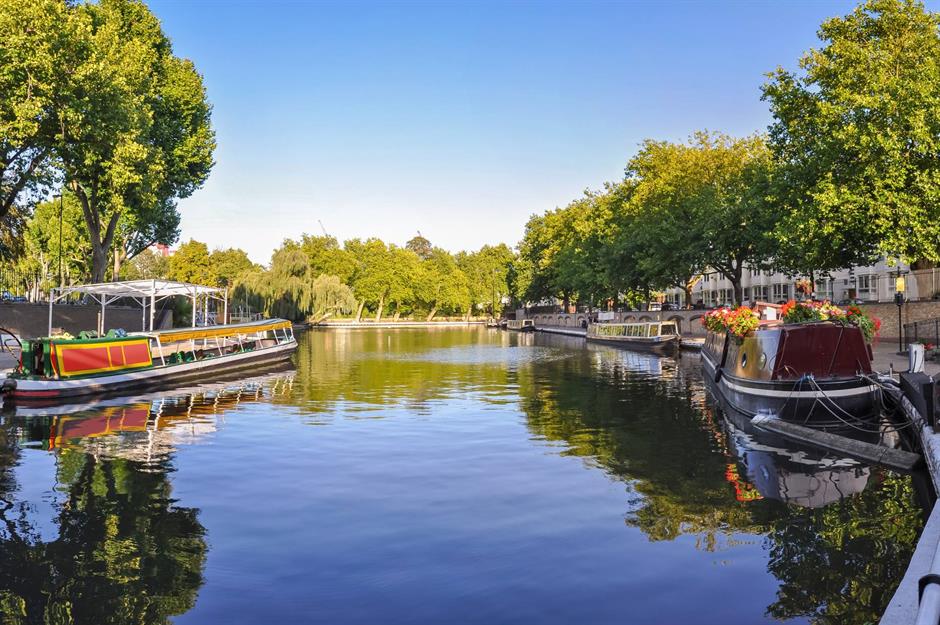
Covering an impressive 137 miles (220km), the Grand Union is the longest canal in the UK. The canal trails from the middle of London through picturesque countryside such as the Chiltern Hills into the suburbs of Birmingham in the West Midlands. Highlights along the vast waterway include Hatton Locks (also known as 'the stairway to heaven'), a steep flight of 21 locks in Warwickshire and the Iron Trunk Aqueduct (or Cosgrove), a magnificent Georgian structure over the River Ouse.
17. Tigre, Argentina
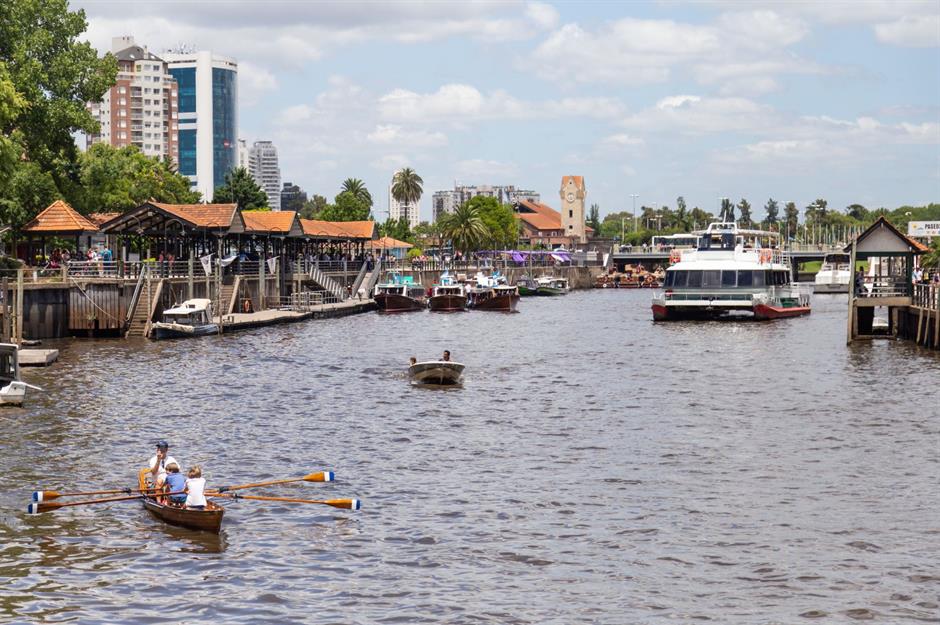
Northwest of capital Buenos Aires lies the colourful port town of Tigre, known as the peaceful gateway to the Paraná Delta. Roughly 200 miles (320km) of rivers, rainforest and wetland make up one of the largest deltas in the world, with Tigre in the heart of it all. With its labyrinthine network of islands and canals, the green vegetation combined with the pretty wooden boats that drift along its muddy waters, Tigre is an enchanting oasis away from the buzzing capital.
16. Panama Canal, Panama
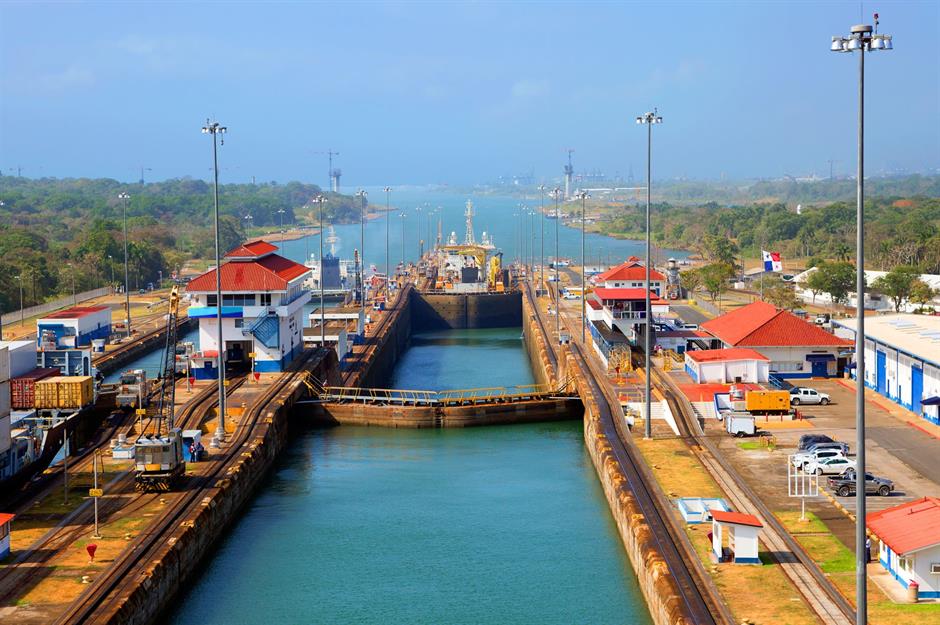
Stretching for roughly 51 miles (82km), Panama’s famous canal journeys between the Atlantic and Pacific Oceans. Completed in 1914, it is one of the most strategic waterways in the world, creating a more convenient and efficient route for ships sailing between the east and the west coast of the US. With its prime location cutting through the narrow Isthmus of Panama, between 13,000 and 14,000 ships from all over the world pass through the canal every year.
15. Göta Canal, Stockholm, Sweden
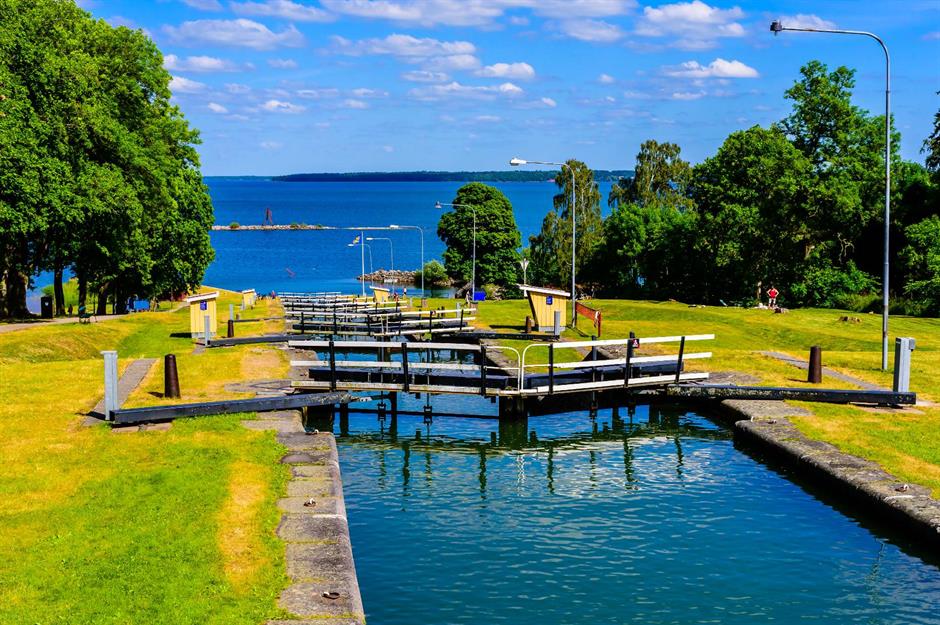
Inaugurated in 1832, the spectacular Göta Canal was one of the largest engineering projects ever undertaken in Sweden. Founded by naval officer Baltzar von Platen, it took a staggering 22 years and around 60,000 men to build the canal, with much of it dug out by hand.
Measuring an impressive 118 miles (190km) long, the waterway connects Lake Vӓnern in the north to Lake Vӓttern in the south. Trailing across some of Sweden’s prettiest lakes, rivers and aqueducts, the historic canal is a popular attraction.
14. Chicago Sanitary and Ship Canal, Chicago, Illinois, USA
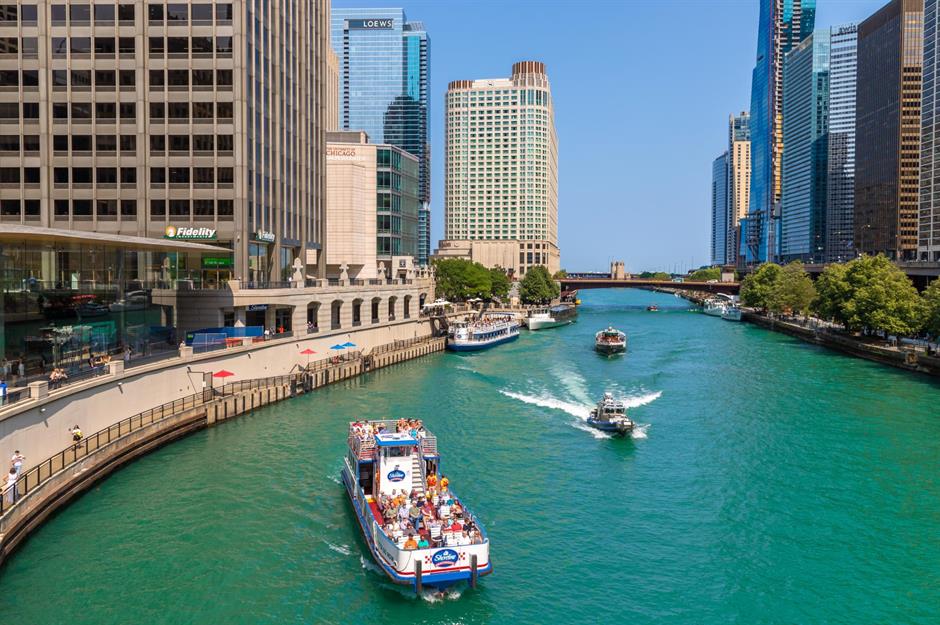
One of the Windy City’s most famous sites, the Chicago Sanitary and Ship Canal is one of Illinois' most recognisable landmarks. Completed in 1900, it was built to reverse the river’s flow after a severe storm caused the river to empty large amounts of polluted water into Lake Michigan.
The canal’s flow reversal is considered an impressive feat of modern engineering. Today the canal, which forms part of the Chicago River, is characterised by its bold green hue, caused by a mix of the river’s clay bottom, lake water and algae. Its waters are dyed a vibrant green annually to celebrate St Patrick's Day.
13. Nikolaifleet, Hamburg, Germany
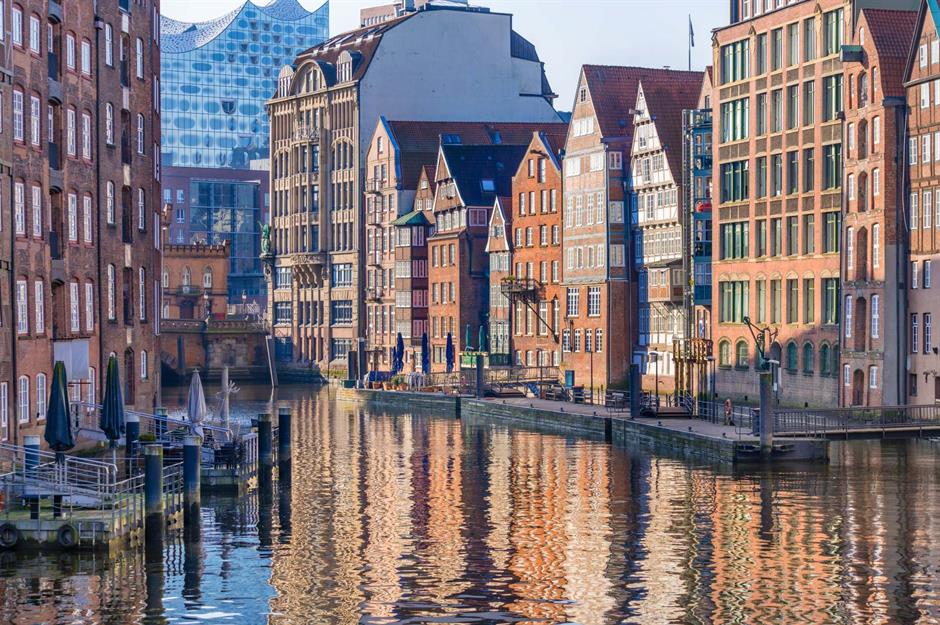
Home to more bridges than any other city in the world, Hamburg is a city of water. Sitting at the point where the River Elbe widens into the sea, Hamburg is Germany’s biggest port, linked by hundreds of winding canals and bridges.
Crowning the old town is Nikolaifleet, the city’s most scenic stretch of canal separating Cremon Island from the mainland. Flanked by Hamburg’s famous red-hued buildings mirrored in its waters, Nikolaifleet is often compared favourably to the canals of Amsterdam.
12. The Grand Canal, China
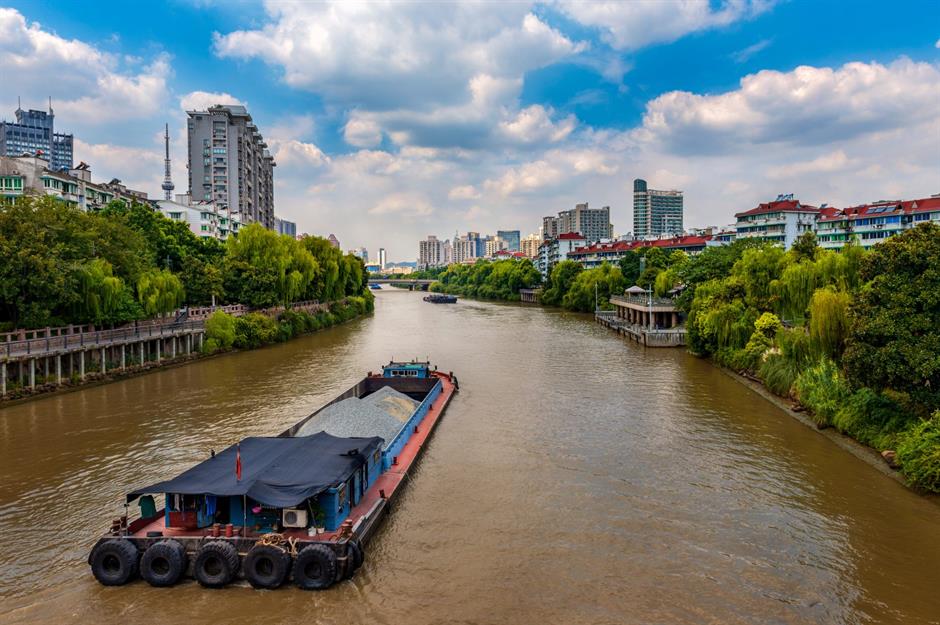
Known as the oldest and longest canal in the world, China’s Grand Canal certainly lives up to its name. Thought to date back as far as the 5th century AD, the canal was one the largest and most extensive civil engineering projects to exist before the Industrial Revolution.
The vast waterway stretches from north and south in eastern China for over 1,100 miles (1,800km). With its key role in China’s economic prosperity and stability, the impressive canal is now a UNESCO-listed landmark and one of the country’s greatest man-made marvels.
11. The Avon Ring, England, UK

Located in southwest Birmingham, the Avon Ring passes through some of the most scenic towns in the Midlands. Stretching for roughly 108 miles (174km), the route encompasses several waterways including the Stratford-upon-Avon Canal and the Worcester and Birmingham Canal. The canal ring passes through some of the region’s best-known sights, including the historic towns of Evesham and Worcester before ending at Stratford-upon-Avon, the famous hometown of playwright William Shakespeare.
10. The Grachtengordel, Amsterdam, Netherlands

Famed for its sprawling maze of waterways, Amsterdam’s canals are probably its most iconic feature. The Dutch capital is home to a whopping 165 canals stretching across roughly 60 miles (100km) and connected by over 1,200 bridges.
Sitting in the city centre framed by gorgeous buildings lie Amsterdam's most photographed waterways, known collectively as the Grachtengordel. The 17th century canal ring consists of the Herengracht, Keizersgracht, Prinsengracht and the Singel canals and has been on the UNESCO World Heritage list since 2010.
9. Hội An, Vietnam
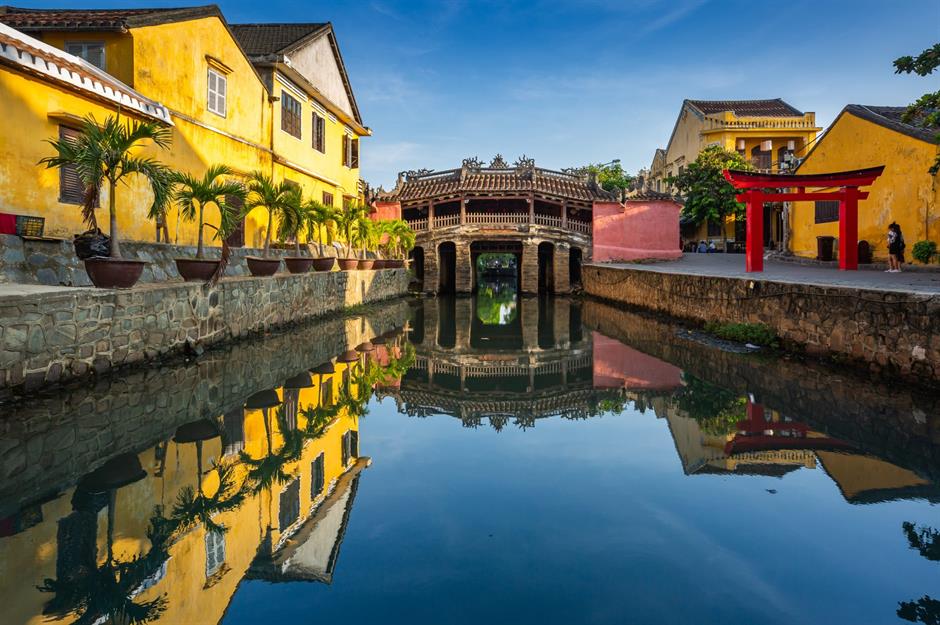
Straddling Vietnam’s central coast, Hội An is an ancient city hailed for its enchanting waterways. From the 15th century to the early 19th century, with its superior spot along the Thu Bồn River, Hội An was a major trading hub of Southeast Asia.
Distinguished by its winding canals and well preserved ornate buildings, the city became a UNESCO World Heritage Site in 1999. The 18th-century Japanese Covered Bridge that crowns the canal is probably its most well-known landmark, a shining symbol of the city's rich history.
8. Canal du Midi, France

Famed for its unparalleled beauty, this pretty waterway in southern France dates back hundreds of years. Built by engineer Pierre-Paul Riquet in the mid-17th century, the Canal du Midi links the Mediterranean with the Atlantic Ocean.
With a whopping 328 structures to its name including tunnels, aqueducts and bridges, the canal is an incredible example of early-modern civil engineering. Passing through the tranquil landscape of the south of France and lined with greenery, we can see why the waterway made the UNESCO list in 1996.
7. Khlong Saen Saep, Bangkok, Thailand
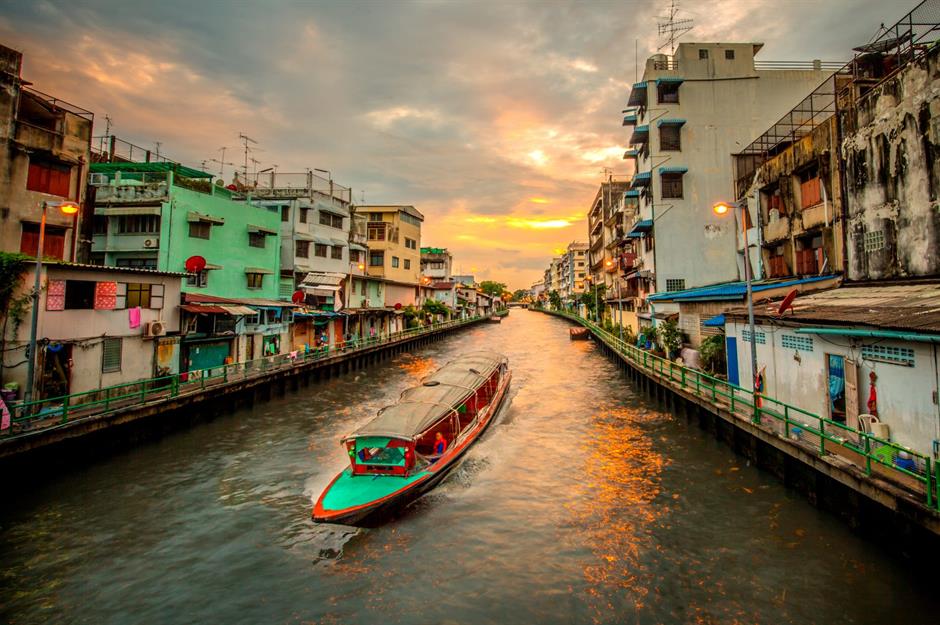
One of Thailand’s most iconic waterways, the Khlong Saen Saep flows through Bangkok from east to west. Beginning in the city’s Old Town, the canal journeys to the Chachoengsao province before flowing into the Bang Pakong River, and is connected to smaller canals throughout the city. With its pretty boats trailing through central Bangkok and ornate Italianate bridges framing the water, the Saen Saep is one of the easiest and most picturesque ways to travel through the city.
6. Groenerei canal, Bruges, Belgium
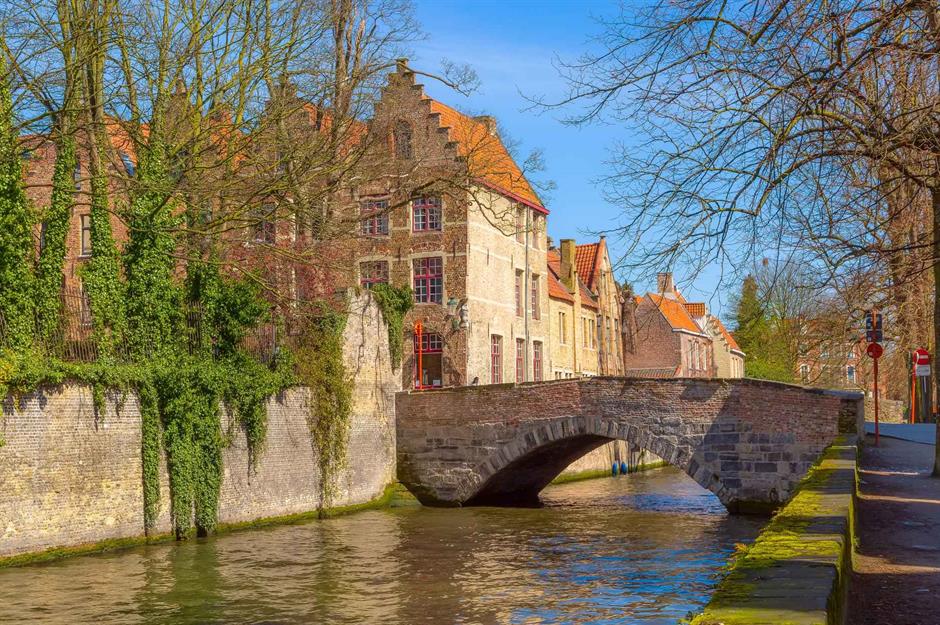
Sat near the coast in northwest Belgium, Bruges is the port capital of West Flanders. For centuries, its sprawling canal network was the backbone of the medieval city, zigzagging through its ornate buildings.
Home to plenty of picturesque waterways, the tranquil Groenerei Canal is one of the city’s prettiest sights. Framed by Bruges’ stunning skyline and lined with trees, with a charming bridge overlooking the water, it is widely considered one of the most romantic canals in the city.
5. Thiou Canal, Annecy, France

Nicknamed 'the Venice of the Alps', Annecy is one of the most picturesque canal cities in the world. Nestled on the northern tip of Lake Annecy, the Thiou river travels through the city’s postcard-worthy old town, forming smaller, more peaceful canalways. With its colourful antique houses, flower-lined river banks and charming bridges overlooking green-tinged water against a breathtaking mountain backdrop, the canal is a real gem of southeast France.
4. Alappuzha, Kerala, India
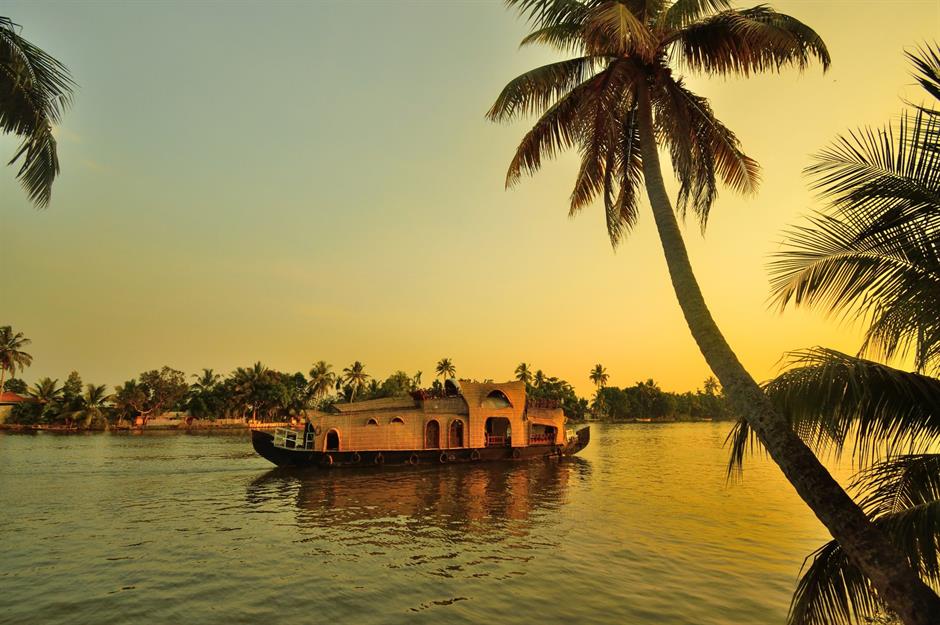
Formerly known as Alleppey, Alappuzha is a city on the Laccadive Sea studded with Kerala’s famous lagoons, rivers and canals. Fringed by palm trees and farmland, the city’s backwaters are decorated with houseboats and punted canoes. With its tangle of scenic waterways, Alappuzha is a popular destination for houseboat cruises and is also the location for the famous Nehru Trophy Boat Race, one of the biggest events in the region.
3. Suzhou, Jiangsu, China
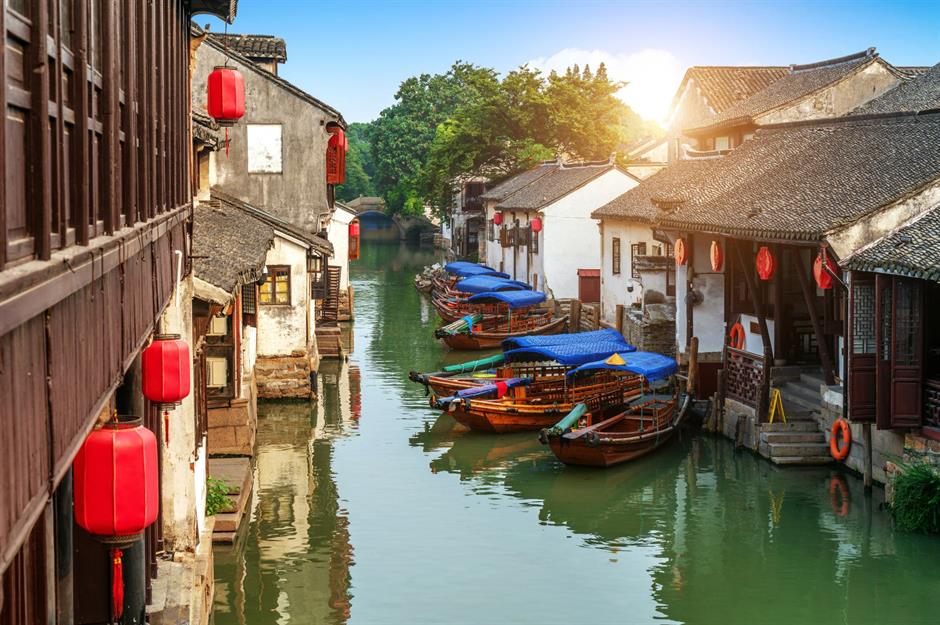
Situated in southern Jiangsu, Suzhou is an ancient canal city in the heart of China’s Yangtze Delta. Nestled between the vast Lake Tai and Shanghai, the island city has over 2,500 years of rich history.
Suzhou is bordered by canals on all sides, while smaller waterways criss-cross its landscape. Alongside its spectacular waterways, stunning gardens and mild climate, Suzhou is home to 'ancient water towns' that float on its waters, making it a holiday hotspot.
2. Giethoorn canals, Giethoorn, Netherlands
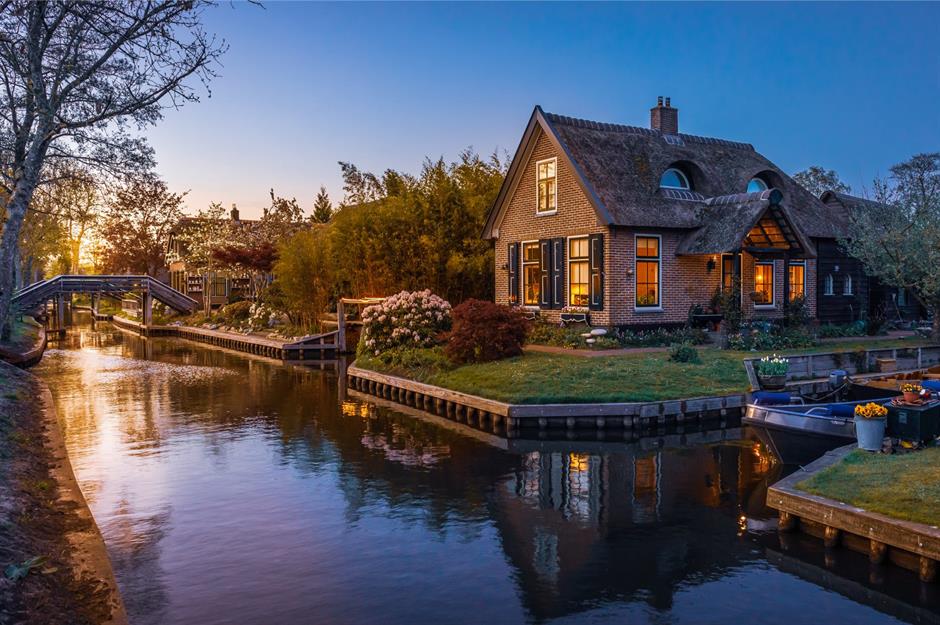
Just northeast of Amsterdam bordering Overijssel’s Weerribben-Wieden National Park is a remote Dutch village hailed for its heavenly waterways. Founded around 1230, Giethoorn’s canals are thought to have been created by monks to transport peat through the area.
Today, the village is famed for having no roads, and its thatched farmhouses are connected by a maze of canals flanked by over 150 wooden bridges. Sailing, cycling and walking are the only ways to get around Giethoorn, making it a peaceful escape from the capital.
1. Grand Canal, Venice, Italy
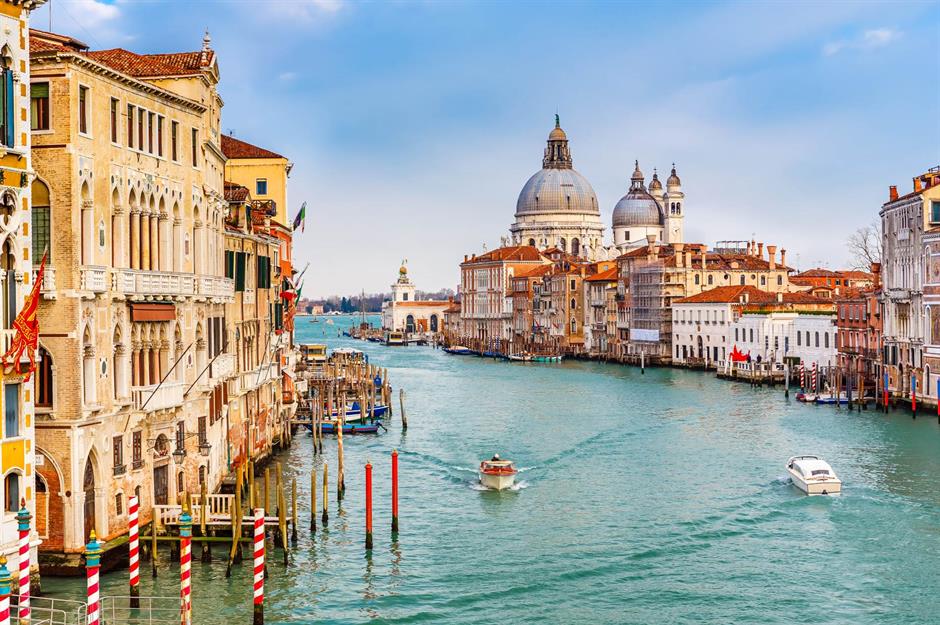
A shoo-in at the top of our list, Venice’s Grand Canal snakes through the heart of the famous floating city. The canal functions as the city’s main transportation source as the use of automobiles is strictly prohibited.
At just over two miles (3km), the Grand Canal is the main artery of Venice, separating it into two, and is surrounded by some of the city’s most famous landmarks. Crossing the water, the lavish Rialto Bridge remains a top attraction. Completed in 1591, it is the canal's oldest bridge.
Comments
Be the first to comment
Do you want to comment on this article? You need to be signed in for this feature